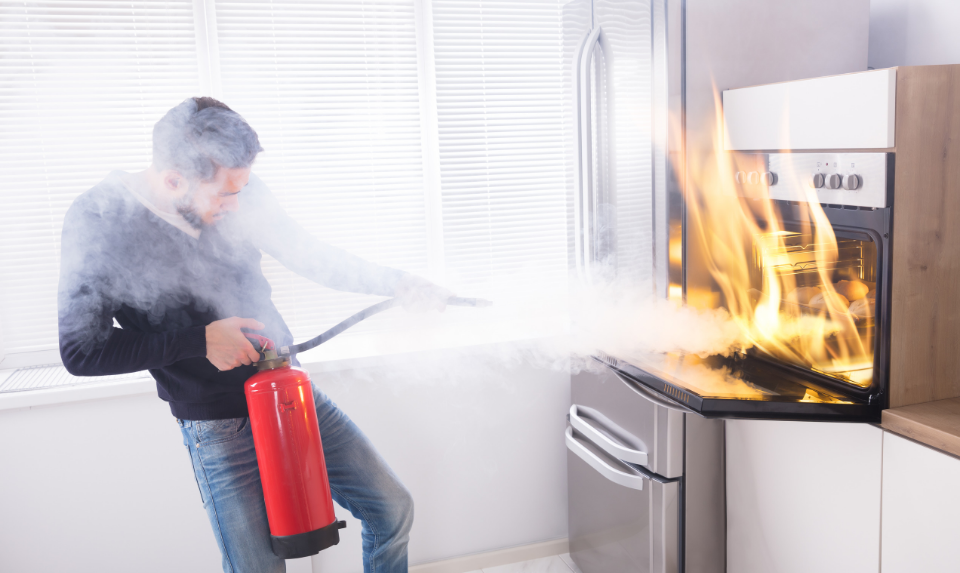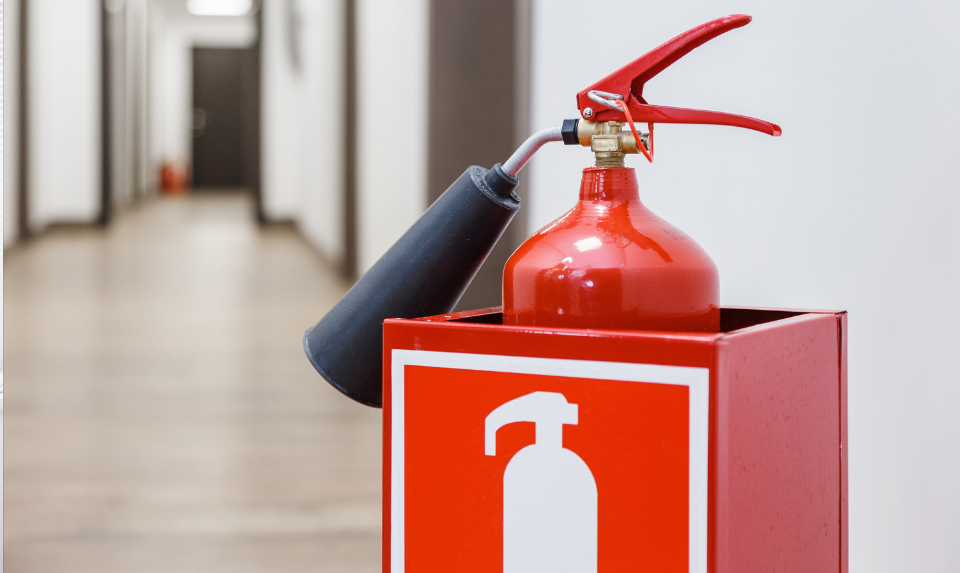Everyone knows that their place of work is required to have a fire extinguisher(s), and everyone has to know where the nearest one is.
On the other hand, most do not recognize that a single fire extinguisher does not work on all types of fire. There are a lot of different types, or classes, of fire extinguishers just as there are a lot of different classes of fire.
To attain true safety for your place of work, you need to make sure that you have the proper extinguisher installed applicable for the potential fire hazards for your building.
For each class of fire, the fuel, heat source and series of events vary, which is why there must be different types of fire extinguishers depending on the type of fire. for example, while a class A fire can be carefully extinguished with water, a class C fire cannot, as water would carry out the electricity and risk harm to the worker.

6 Types of Fire Extinguishers
Now that you have a basic understanding of a variety of types of fire and why different extinguishers are needed, 6 main types of fire extinguishers and their use will be discussed:
ABC POWDER FIRE EXTINGUISHER
An ABC powder fire extinguisher has several advantages as it is a multi-purpose extinguisher and as a result one of the most regular extinguishers to have on hand.
A powder extinguisher sprays a chemical powder composed normally of monoammonium phosphate. This acts to cover the fire and asphyxiate it.
Powder extinguishers are helpful for class A, B and C fires, since it is not an electrical conductor and since it can successfully break the reaction in a liquid or gas fire, something a water extinguisher can’t do.
CARBON DIOXIDE FIRE EXTINGUISHER
A carbon dioxide fire extinguisher (CO2) is one of the cleanest types of extinguishers to make use of as it leaves no remains and requires no tidying.
The CO2 extinguisher does precisely that – extinguishes CO2. By doing so, it removes oxygen from the fire, successfully suffocating it of oxygen. It is ideal for use on class B fires that involve combustible liquids and on electrical fires.
WET CHEMICAL FIRE EXTINGUISHER
The wet chemical extinguisher is a particular type primarily focused on class K fires, those concerning cooking medium such as animal and vegetable fats or oils.
These extinguishers hold a solution composed of potassium that efficiently launches a two-sided attack on fires.
First, the liquid mist it sprays acts to cool the fire. Second, due to the chemical reaction of the solution with the cooking means, a thick soap-like material forms, sealing the exterior of the liquid to prevent re-ignition.
The wet chemical extinguisher, then, is perfect for a kitchen scenery and class K fires. Nevertheless, it can also be useful for class A fires where objects such as wood or paper has caught fire.
WATER MIST FIRE EXTINGUISHER
The most adaptable of the set, the water mist extinguisher, uses a newer technology that works against most classes of fire.
This type of extinguisher releases microscopic liquid molecules which battles the fire on several levels. First, since so much water is dispersed in such a microscopic fog-like form, the level of oxygen in the air decreases, which help to asphyxiate the fire.
Second, the water particles are drawn to the fire and, as water constantly does, acts to cool it, dropping the temperature.
Finally, and possibly what is most distinctive about the water mist extinguishers, is that the water has been de-ionized (the minerals have been removed). As an effect, it can essentially be used on electrical fires, as the de-ionized water will not work as a conductor, as well as on flaming liquids/gases that a normal water extinguisher could not be useful to.
As a result, a water mist extinguisher is secure and efficient for use on classes A, B, C and K fires.

FOAM FIRE EXTINGUISHER
Foam fire extinguishers are appropriate for class A and the combustible liquids of class B, though not efficient for gaseous fires.
It sprays a type of foam that expands when it hits the air and blanket the fire. This blanket prevents the vapours from mounting off the liquid to provide for the fire, thus starving it of fuel. In addition, because the foam is varied with water, it has a cooling result as well.
Foam extinguishers are some of the finest for liquid fires, such as gasoline fires, but can as well be used on Class A fires relating solid combustibles like wood.
CLEAN AGENT FIRE EXTINGUISHER
A clean agent fire extinguisher is a kind of gaseous fire control. Stored in its liquid form, when it is sprayed and hits the air, it converts to its gas appearance which is non-conductive, secure for use while people are present, leaves no remains, and has a very short atmospheric duration, making it ecological.
The gas, often composed of Halon, extinguish the fire by dropping the oxygen levels and impede the chain reaction. Since it is non-conductive and sanitary, it is ideal for rooms or businesses full of electrical and computer apparatus. They are most normally used for class B and C fires.